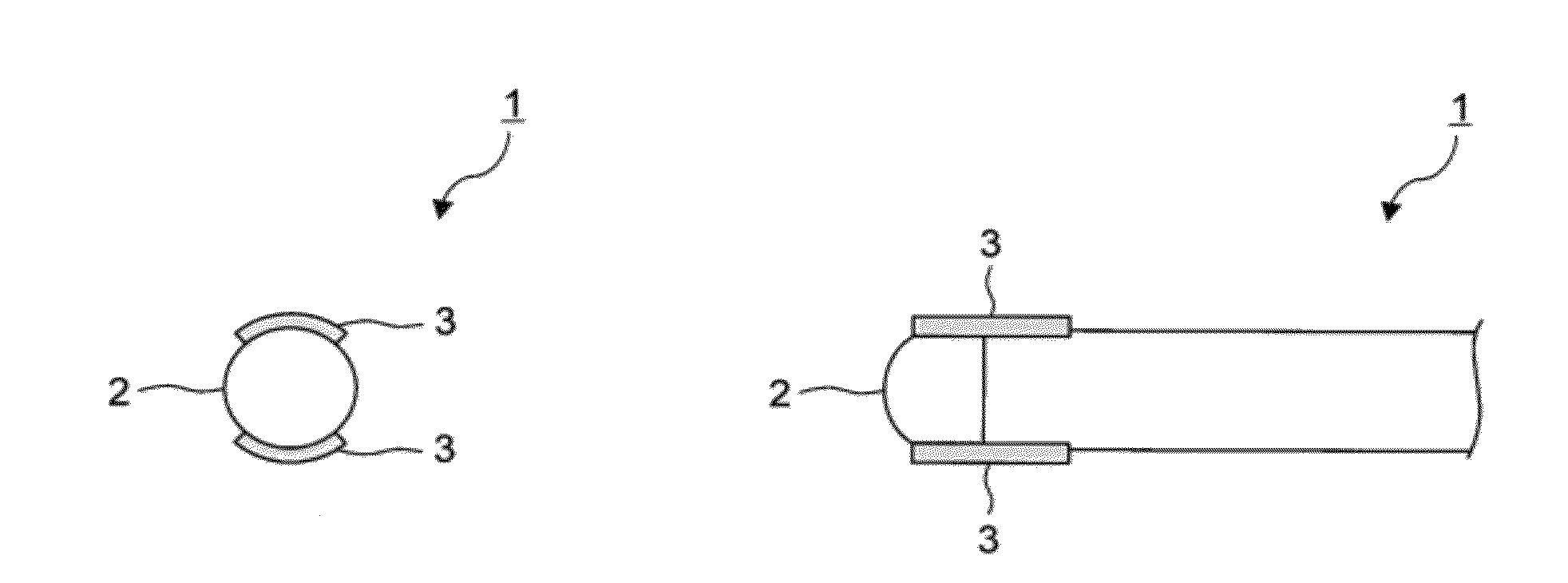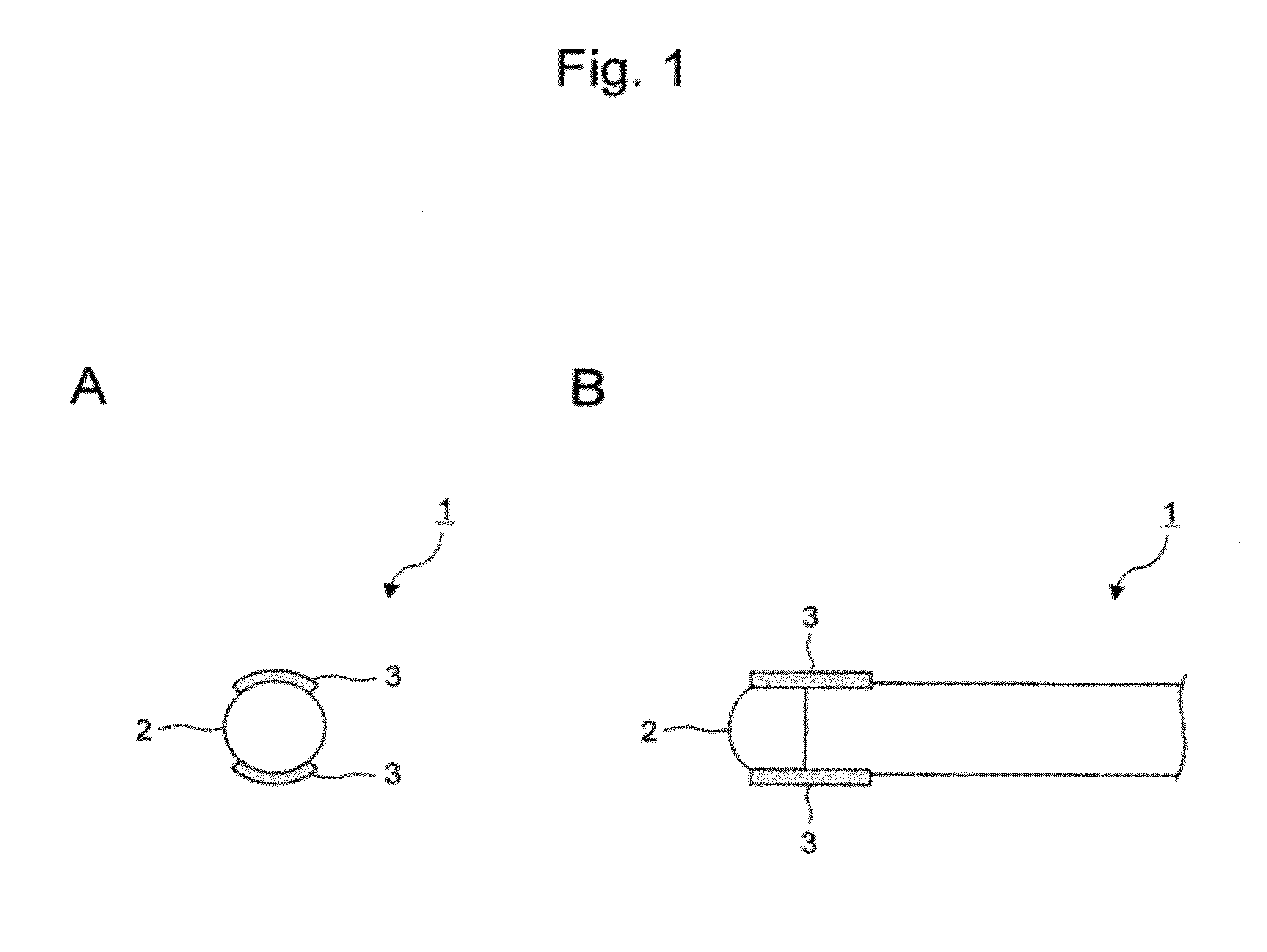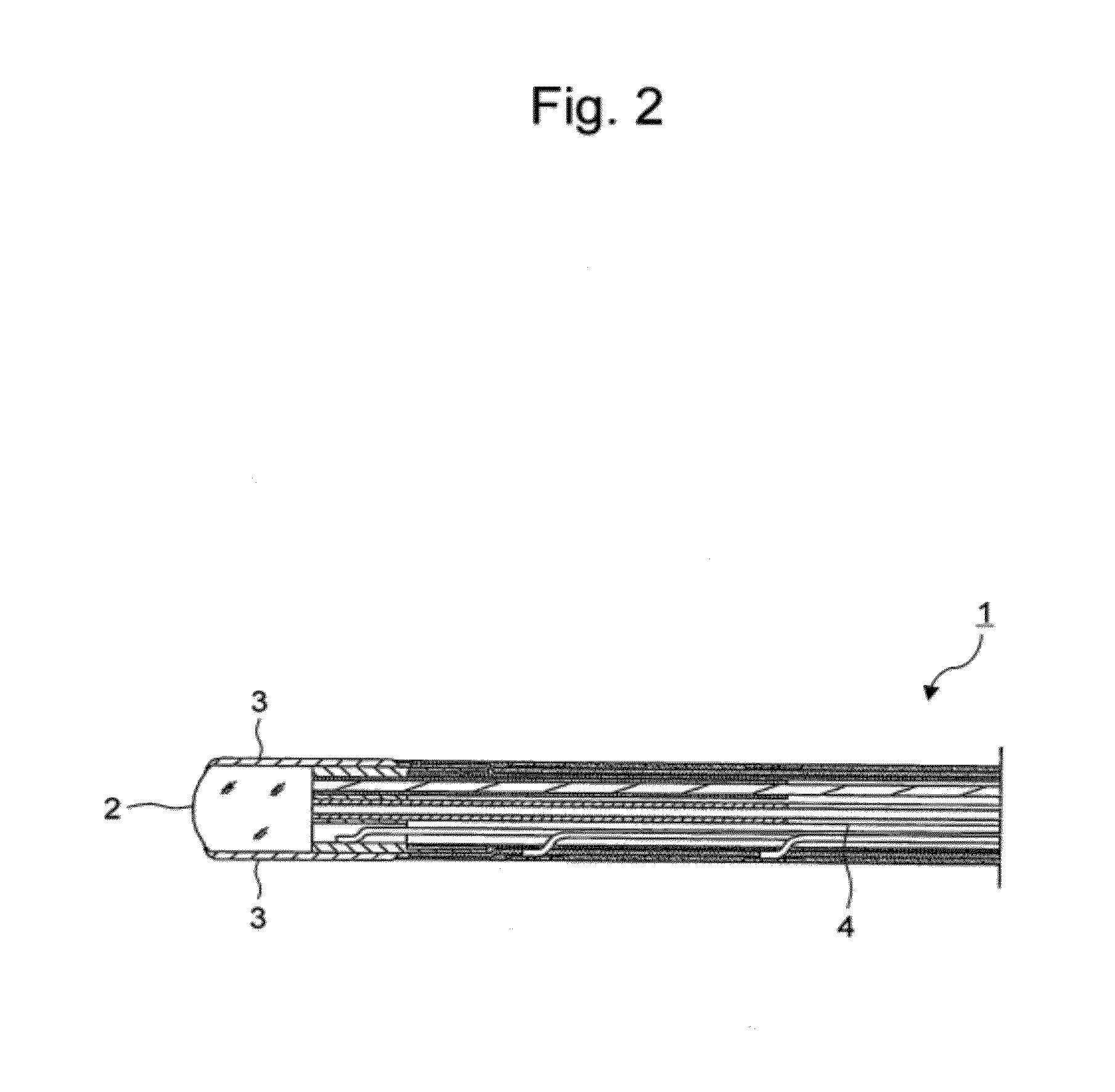Catheter for performing photodynamic ablation of cardiac muscle tissue via photochemical reaction
a technology of photochemical reaction and cardiac muscle tissue, which is applied in the field of treatment and photodynamic therapy for arrhythmias, can solve the problems of generating irregular heartbeats, tachyarrhythmia attacks, and atrioventricular nodes not being able to completely process such impulses,
- Summary
- Abstract
- Description
- Claims
- Application Information
AI Technical Summary
Benefits of technology
Problems solved by technology
Method used
Image
Examples
example 1
Electrical Conduction Blocking Via Early Photodynamic Therapy Using Cardiac Muscle Tissue Extirpated from a Rat (Ex Vivo)
[0113]The right ventricular tissue isolated from a Wistar rat was used as a sample. Talaporfin sodium was used as a photosensitive pigment. Talaporfin sodium was dissolved in a perfusion fluid at 4.3 μg / ml. Tyrode's solutions were used as perfusion fluids (95% CO2, 5% O2 37° C.). A semiconductor laser with a central wavelength of 670.8 nm was used as an excitation light source, and the irradiation was carried out at 150 mW / cm2 and 3.5 J / cm2.
[0114]An experiment of electric conduction blocking in the cardiac muscle was carried out by the following procedures.
[0115]1. The heart was extirpated under deep anesthesia and the right ventricular wall was excised.
[0116]2. The excised tissue was subjected to perfusion in a Tyrode's solution comprising talaporfin sodium dissolved therein for 2 hours.
[0117]3. Three bipolar electrodes were positioned in cardiac muscle tissue. O...
example 2
Acute Experiment (Open-Heart Surgery) Using Swine: Verification of Immediate Conduction Block
[0122]Left auricular tissue obtained from a swine (body weight: 15.4 kg) was used as a sample. Talaporfin sodium was used as a photosensitive dye, and it was administered intravenously to the swine at 10 mg / kg of the body weight. The duration until light irradiation after the administration of the photosensitive dye was 30 minutes. Light irradiation was carried out using a semiconductor laser with a central wavelength of 663 nm at a power density of 5.2 W / cm2, an energy density of 208 J / cm2, and a spot size of 7 mm Φ.
[0123]FIG. 13 shows an experimental system using swine.
[0124]The experiment for verification of immediate conduction block using swine was carried out in accordance with the following procedure.
[0125]1. A swine was subjected to open-heart surgery under deep anesthesia and the left auricle was exposed.
[0126]2. Three bipolar electrodes were positioned in cardiac muscle tissue of t...
PUM
 Login to View More
Login to View More Abstract
Description
Claims
Application Information
 Login to View More
Login to View More - R&D
- Intellectual Property
- Life Sciences
- Materials
- Tech Scout
- Unparalleled Data Quality
- Higher Quality Content
- 60% Fewer Hallucinations
Browse by: Latest US Patents, China's latest patents, Technical Efficacy Thesaurus, Application Domain, Technology Topic, Popular Technical Reports.
© 2025 PatSnap. All rights reserved.Legal|Privacy policy|Modern Slavery Act Transparency Statement|Sitemap|About US| Contact US: help@patsnap.com



